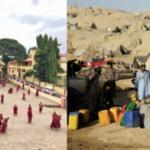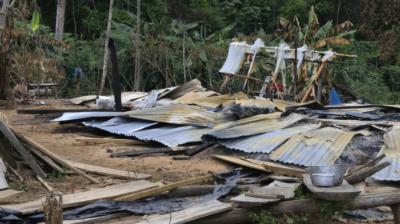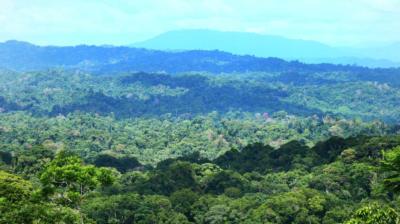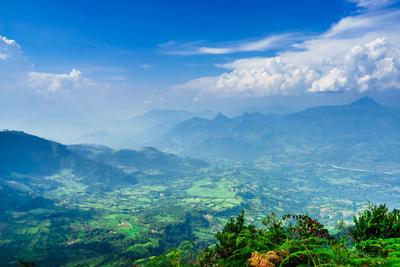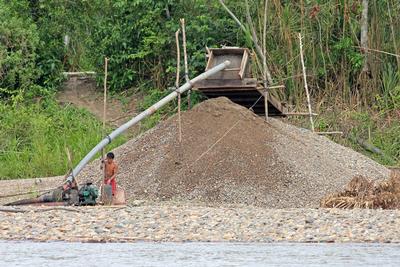Has war concealed Colombia’s biodiversity? Natural scientists and species in new designs for peace
Peace treaty with FARC: the Colombia Bio Expeditions
The Colombia Bio expeditions were launched just four days after the FARC peace process was signed with the Colombian government in 2016. They offered a promising opportunity to finance peace and shape a new nation. Armed with laboratory equipment, formalin, tweezers, binoculars, alcohol, and notebooks, teams of biologists set out to explore previously forbidden regions to register Colombia’s biodiversity. "With continuous support for the development of 48 BIO scientific expeditions in 75% of the country's departments, the generation of 500,486 biodiversity records in the public information system (SiB) has been achieved. Additionally, the identification of 206 potential new species for science and 200 endemic species (unique to Colombia) has been accomplished", a stated in a 2022 report by the Ministry of Science (Minciencias). Minciencias carried out this assessment in 2022, acknowledging the biological expeditions as a fundamental pillar in the transformation of Colombia's future bioeconomy.
When the program was launched, it was said that the end of the conflict did not only grant access to previously forbidden areas, but also unlocked the potential to tap into Colombia's vast biodiversity, concealed during more than six decades of war. This captivating project garnered significant resources from international funding and governments, most notably from the British government, which invested millions of pounds. With the promise of the discovery "of new drugs, medicines, biofertilisers and pollution tackling products", the first step in the program was to gather as much genetic information as possible for future developments. The expeditions were just the beginning.
Scientific research marked a crucial chapter in this journey. Led by teams of dedicated biologists, their mission extended far beyond scientific exploration. The expedition members were not just scientists gathering data; they were pioneers forging paths of peace. They represented hope for a nation weary from decades of conflict, showing that the end of hostilities could lead to exciting opportunities for the development of a new Colombia. They were portrayed as explorers venturing into areas that were once forbidden due to the dangers posed by armed conflicts. Their presence in these regions served as tangible evidence that the peace agreement was having a real impact on the ground, making once volatile territories safe for scientific exploration. However, while the Colombia Bio expeditions brought immense opportunities for scientific exploration, this movement inadvertently risked erasing the rich histories and life stories woven into these lands over decades.
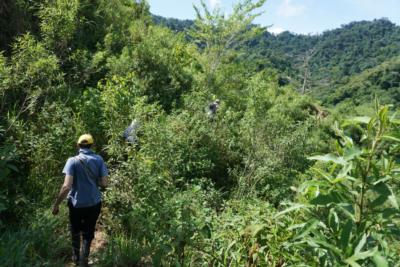
During my time as a doctoral intern at the Alexander von Humboldt Biological Resources Research Institute (Humboldt Institute) at the Social Sciences office, I witnessed their dedication to documenting the nation's diversity. The institute, along with a few other research centres, play a crucial role in safeguarding Colombia's species inventory. They employed various traditional methods, such as preserving plants and animals in alcohol, but during the expeditions they landed into creating genetic barcodes for tissue samples, putting the project at the forefront of modern scientific demands. What I reference as "science" in this text refers exclusively to the traditional practice of collecting, sacrificing, and registering specimens, proper of a more traditional biological science of species identification through taxonomic practices.
Tracing the lines of peace
Besides the scientific contributions, each step of the journey symbolically traced the lines of peace, drawing connections between previously isolated areas. As the researchers documented new species, it was as if they were connecting the dots of a larger picture—a picture that showcased the nation's natural wonders while demonstrating the positive impact of peace on the environment. The once-hidden riches of Colombia's diverse ecosystems were finally being unveiled and celebrated for its economic opportunities, reinforcing the country's reputation as one of the world's most biodiverse regions (Westlake, 2019). This idea was supported by the promise that genetic information collected during the expeditions held great potential for future industrial developments. It was a promise of a discovery that could potentially trigger the creation of innovative products that could benefit Colombian economy.
The presence of scientists in different regions of Colombia served as tangible evidence that the peace agreement had fulfilled its mission, rendering the once dangerous regions now safe for scientific exploration. The lines of peace were drawn across a country that had been developed apart from areas known as "zones of public order" (Serje, 2011). These areas, once recognized as conflict zones, were previously thought as reminiscent of unexplored wilderness during colonial times. Now, they were being integrated back into the national project, but under a new banner and a different army. The natural sciences, with their biologists, equipment, knowledge, and most importantly, their species, were at the forefront of this new mission (Angel Botero, 2020).
Building a "map of peace" posed significant challenges, especially when delineating borders and defining territories as peaceful enclaves. The conventional approach to peace often perceives it as the mere absence of conflict, an idealistic notion that proves difficult to achieve in a country grappling with numerous political and economic complexities, which give rise to other forms of violence. In this context, attaining a state of complete non-conflict is practically unattainable due to the intricate interplay of various factors that continue to impact the nation.
The focus on portraying Colombia as an undiscovered realm captured more attention than acknowledging the lived experiences of territories that had endured and survived amidst the ravages of war. Despite the promise of untouched nature, these lands bore the scars of conflict, having endured glyphosate spraying, bombings, armed confrontations, illegal mining, and drug trafficking. However, the image of preserved vegetation amid conflict presented a more promising narrative than the years when the state's presence was limited. Margarita Serje referred to this as the "myth of the absence of the state," shedding light on alternative ways of existence in these regions, although not necessarily leading to improved living conditions for the population.
Peace in the making
The act of mapping and delineating territories shapes our perception and interaction with the land. The Colombia Bio expeditions not only explored biodiversity but also contributed to the reimagining of the country and its relationship with the environment in the post-conflict era. This novel design of peace showed that biological traditional practices such as taxonomy and inventory recollection, combined with product development, could pave the way for a brighter future for Colombia.
The intersection of biological concepts and the national discourse of peace highlighted the recognition of natural treasures previously overshadowed by war. Each discovery of a new species was celebrated as a testament to the impact of peace. Essentially, the overarching aim of the various scientific projects conducted within Colombia Bio was to present Colombia as a vast country of concealed nature, making it of interest for international investors interested in discovering those natural promises.
Amidst the awe-inspiring discoveries, the expeditions did not shy away from acknowledging the harsh realities of the regions they explored. The scars of war were evident on the landscapes. Bombings, aerial glyphosate spraying, landmines, among others, had left indelible marks on the landscapes, moving further away from the promise conveyed by the idea of concealed nature. The endeavour of registering biodiversity, and hence, mapping peace, was not without complexities. The process of drawing lines to mark borders and define territories brought attention to the intricacies of governance and the historical context of each region. Acknowledging the lived experiences of those who had endured conflict was essential in appreciating the significance of peace and recognizing the resilience of communities amid adversity. However, this wasn’t part of the project.
Rendering Colombia as a vast unexplored country
Ultimately, the Colombia Bio expeditions contributed to the reimagining of the country as it stepped into a post-conflict era. The intersection of science, peace, and environmental preservation fostered a vision of Colombia that embraced both its natural wealth and its potential for peaceful coexistence. The lines of peace drawn by the researchers were more than just pathways through the wilderness—they represented a collective effort to move towards a brighter and more sustainable future.
Nevertheless, this concept of exploring uncharted territories to uncover Colombia's natural treasures revived echoes of colonial aspirations, harking back to a time when vast, wild regions were seen as untamed frontiers waiting to be integrated into the nation's wealth. There was a risk of erasing the live histories of those inhabiting these places for decades, despite armed confrontation and violence.
Throughout the years of conflict, the territories that became the focus of scientific exploration had also been home to countless individuals and communities. These places bore witness to the struggles, triumphs, and resilience of those who called them home. Local populations had adapted to their environments, developed unique cultures, and formed deep connections with the land. While the Colombia Bio expeditions did encounter some resistance from local populations, it is important to note that most of these explorations took place without much advance notice. The expeditions largely avoided territories inhabited by indigenous communities and chose remote locations with sparse populations, which helped minimize suspicion and opposition.
Moreover, it is important to acknowledge the role of scientists who dedicated themselves to their professions amid the turmoil of conflict. Their commitment to understanding and documenting the biodiversity of these regions was no small feat. They braved the dangers of war to unravel the secrets of Colombia's natural wonders, all while facing challenges that went beyond the scope of their scientific endeavours. The country has never been closed to advances in biological science, despite the difficulties in its practice. However, this is something that gets disconnected from this idea of concealed nature.
As the Colombia Bio expeditions pressed forward, there was a risk of overshadowing these histories and life stories with the emphasis on scientific discovery. While the exploration aimed to connect Colombia to its natural heritage, it was essential not to disconnect it from its human heritage. Preserving the ecological wealth should go hand in hand with acknowledging the cultural heritage and the lives entwined with the land.
By incorporating local voices and experiences into the narrative of the expeditions, a more holistic understanding of Colombia's biodiversity could be achieved. The scientific exploration would then not only be about discovering new species and adding to the SiB records but also about recognizing the inherent value of the land and its people.
Ultimately, the success of the Colombia Bio expeditions hinged on how well they managed to integrate scientific progress with the respect for history and the diverse tapestry of human lives intertwined with the land. This balanced approach would ensure that Colombia's exploration of its natural treasures would not be an erasure of its past but a celebration of its enduring heritage.
Reference list:
Angel-Botero, C. (2020). Peace producing science. Biological expeditions in the replacement of war. Biodiversidad en la Practica. 5, 1, 1-15.
Serje, Margarita (2011) El revés de la nación: territorios salvajes, fronteras y tierras de nadie. Bogotá: Ediciones Uniandes.
Serje, M. (2012). El mito de la ausencia del Estado: la incorporación económica de las “zonas de frontera” en Colombia. Cahiers Des Amériques Latines, 71, 95–117. https://doi.org/10.4000/cal.2679
Westlake, M. (2019, February 4). Colombia: Evolution's favourite playground. Kew Royal Botanical Gardens. Retrieved August 30, 2023, from https://www.kew.org/read-and-watch/why-is-colombia-biodiverse
